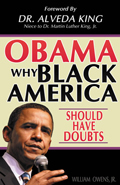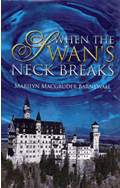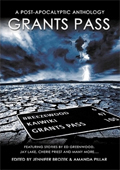By
Marilyn M. Barnewall
February 3, 2010
NewsWithViews.com
Obama Administration officials are going around America this week (as they did last week) to announce funding for various high-speed rail (HSR) projects. Based on the plans proposed to the American people, the question must be asked: Are President Obama and Vice-President Biden talking about HSR? Or, are they talking about updating financially troubled Amtrak? Is this an attempt to remake an unprofitable rail service into Rapid Transit Rail (RTR) while telling taxpayers they are building a high-speed rail system?
There is a huge difference between HSR and RTR.
The Administration says HSR will create new jobs. If what they are proposing is HSR, they are right. They are also right when they say an investment in HSR can help rebuild the economy. The Obama Administration apparently prefers spending taxpayer dollars to using private capital (which is on the table). I know it is unfamiliar territory for bureaucrats, but “private capital” translates to “zero tax dollars.” Zero tax dollars is about all the American government currently has in its coffers.
I’ve said in other high-speed rail articles that a properly built HSR system can create jobs and stimulate the economy. A Rapid Transit Rail (RTR) system will too – to a far lesser degree. There will be far fewer jobs with RTR than with HSR and they will pay less. They will also offer less long-term employment with good job benefits. The same level of builder expertise isn't required for an Amtrak update as for HSR.
Since the Recovery Panel now has union representation with AFL-CIO President Richard Trumka, union members should be asking him if he is serving their best interests? Or, is he serving the needs of the Obama Administration? Is non-union labor represented on the Recovery Panel?
Listen closely when President Obama and Vice President Biden talk about high-speed rail.
There are very apparent reasons why the announced Tampa to Orlando or Milwaukee to Chicago rail links cannot possibly be representative of a high-speed line. If it takes a HSR train 25 miles to reach full speed – and it does – and another 25 miles to slow from top speed so it can safely stop, the 85-mile stretch of Tampa-Orlando rail line proposed by Obama provides 35 miles of HSR and 50 miles of RTR. Such a short-distance “link” does not support HSR. It supports RTR.
When people talk about a Tampa-Orlando 85-mile long HSR line or a 90-mile Milwaukee to Chicago rail link, they are either talking Chicago Political Speak, or they are ill informed about the differences between the two systems. HSR is designed to carry people long distances, not 85 or 90 miles. That’s the job of RTR. If President Obama doesn’t know that, he should find out before telling the American people he’s giving them HSR when, in reality, he is spending their tax dollars on rapid transit. At the very least, Secretary of Transportation Ray LaHood, should know the difference.
In his highly viewed State of the Union speech last week, President Obama said his plans should make America’s transportation system more competitive with China (which is building HSR) and Japan (which has had HSR for over 50 years). If he were talking about HSR, he would be right. Implementing short-distance rail links designed to update Amtrak via a rapid transit system will not make America’s rail system more competitive with nations that have real HSR.
To make what I’m saying very clear, the Obama Administration is lying – intentionally or otherwise – to the American people. To be fair, there is another possibility. It is called being uninformed about what one does before committing huge amounts of money to a project, mistakenly telling people one thing when you mean another.
HSR is a national project from which all Americans benefit equally. An Amtrak update using RTR as proposed by President Obama is a series of local projects from which limited areas of the country benefit. The rest of us in fly-over country (where we read our Bibles and hug our guns) get to pay for it.
So why are politicians supporting this project? One answer might be found by evaluating every contract signed by those who profit from each rail line – car rental agencies, contractors who build stations and motels, etc. – to see if any percentage of revenue goes anywhere but to their own bottom lines.
Bureaucrats within the Obama administration have expressed concern that HSR may not generate enough passengers to make it profitable. Based on their “tell them it’s high-speed rail but give them rapid transit deceit,” such fears are justified. An updated version of Amtrak is not HSR and will not draw to it sufficient passenger traffic to make it succeed. And knowing that makes these planned 85 and 90-mile stretches of track even more peculiar choices.
Regardless of what kind of rail service it provides, the new rail routes announced by President Obama in his speech are, in a profit sense, just another bridge to “nowhere.” As I said in my Canada Free Press article of October 26, 2009:
“The average speed of HSR trains is between 150 and 250 mph… RTR averages between 100 and 150 mph and traditional rail averages from zero to 100 mph. HSR moves people across long distances very quickly. RTR takes people from a central HSR depot to a variety of locations.”
Additionally, instead of responding to demand that already exists and is not being well-served by either our failing airlines or our national rail service, the first rail link announced, Tampa to Orlando, will have to create mass transit needs where none have existed. Neither of these cities will likely produce the revenue base offered by more heavily populated areas. Revenue comes from connecting densely populated areas to one another.
Is this a test case to make HSR (as fed to and perceived by the public) fail? Call RTR high-speed rail and if it fails, it provides an undercover boost to an ailing airline industry by removing competition from the marketplace. The choice of locations and the confusion about HSR versus RTR makes the test cases suggested appear like an underhanded way of making HSR appear to be a failure when it is not even part of the plan. Instead, it will be an RTR failure… but who will know the difference?
As I said in my June 25, 2009 News With Views article:
“The Bullet Trains were implemented by Japan in the mid-1960s and today ‘garner a 67% market share of travel between Tokyo and Aomori. The airlines serve only 33 percent of travel between these two cities.’
“Speed is important and construction largely determines the ability to achieve the maximum speed available. In France, when the TGV high-speed rail operation from Paris to Marseilles shortened travel time between the two cities from just over 4 hours to 3 hours, market share jumped to approximately 60%. Prior to that, it carried only 40 percent market share. To gain public support for rail travel and resultant market share, the quality of high speed rail construction is critical.”
With 50 years of marketing analysis available proving high speed rail not only competes effectively with the airlines but also can earn a majority of market share, why were these short-distance Pork links chosen? In the Florida example, it doesn’t serve a majority of the state’s residents or its tourists. So what reasoning lies behind it?
It is particularly disgusting to watch this happen because, since 1995, a private investor has been trying to get the American government to let him invest his own money – no taxpayer dollars involved – to build a national HSR system. His plans are so thorough they include evacuation routes to quickly move people from areas likely to face hurricanes – and those plans were approved by one of the States facing hurricanes each year. The plans he submitted to the government in 1995 are detailed and provide a national, not regional, system.
Who is this “investor?” An American born and raised in Wisconsin. Following is his list of things that need immediate attention if high-speed rail is to become a reality.
1.
Right of Way and Roadbed planning and construction;
2. Roadbed equipment and engineering; with vehicular
traffic tunnels;
3. Hi-Speed Train engines and passenger railcars,
4. Civil engineering studies and FRA/USArmy approvals/modifications;
5. Real Estate and Land procurement;
6. Electrical Power Stations;
a.
Westinghouse
b. General Electric
c. Other alternatives
7.
Hotel, Depot and Maintenance Facilities' design and construction;
8. Rail Track Assembly Plants (20 buildings, minimum);
9. Electrical Power Stations/Plants (Non-nuclear/Nuclear);
10. Human resources;
11. Vehicle procurement;
12. Metal Tower fabrication and wiring;
13. Overall safety and security programmes;
14. Underground electrical, water, gas piping between
corridors;
15. Parallel two way emergency and evacuation vehicle
roadways;
16. Food Management Services;
17. Emergency Health and Safety Services
President Obama said in his State of the Union address that China is building high-speed rail, and asked why can’t we? I wanted to shout: “Because we are bankrupt and China is not – and what you are suggesting is not HSR!”
|
Subscribe to the NewsWithViews Daily News Alerts! |
Now we have a bridge AND a badly defined rail system (which, in reality, is Amtrak on rapid transit steroids) going to nowhere.
If this Administration does not become more sophisticated in its understanding of how to define rail systems, our economy may well be an unwilling passenger heading for the same destination.
� 2010 Marilyn M. Barnewall - All Rights Reserved
Sign Up For Free E-Mail Alerts
Marilyn Barnewall received her graduate degree in Banking from the University of Colorado Graduate School of Business in 1978. She has authored seven non-fiction books about banking, two are listed at Oxford and Cambridge University libraries in Great Britain. Her current book, When the Swan’s Neck Breaks, details the banking problems she foresaw in 2006. Of the 24 predictions made in the book, 22 have happened. It is fiction but readers refer to it as docu-fiction.
Barnewall was named one of America's top 100 businesswomen in the book, What It Takes (Dolphin/Doubleday; Gardenswartz and Roe) and was one of the founders of the Committee of 200, the official organization of America's top 200 businesswomen. She can be found in Who's:Who in America (2005-08), Who's Who of American Women (2006-08), Who's Who in Finance and Business (2006-08), and Who's Who in the World (2008).
Web site:
E-Mail: marilynmacg@juno.com
















